Relations among Sectors
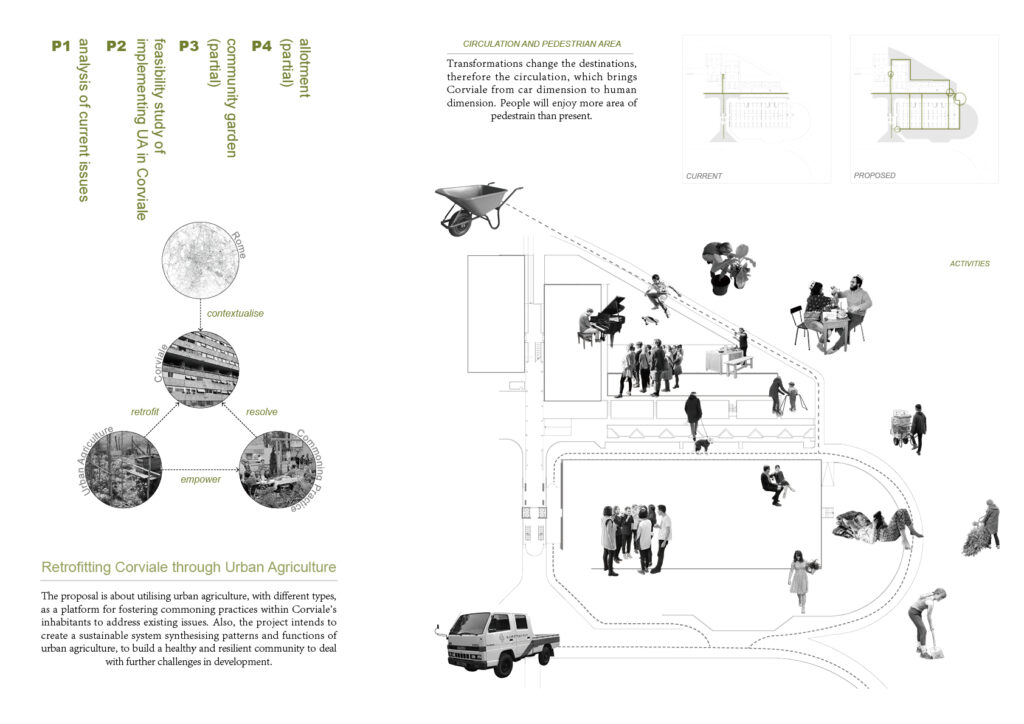
Project Statement
Corviale is a monument, as well as a symbol of the issue of public housing in Roma. After the Second World War, huge amounts of residence were destroyed, along with large numbers of population flooded into cities, demands of housing had been increasing significantly. The PEEP proposal, including Corviale, was the product of this specific social context. The building was known for its one-kilometer length and being illegally occupied by a group of people. The squatters settled on the fourth floor originally proposed to provide public services, which caused the alienation within Corviale. At the later stage of the public housing movement, due to poor governance and dereliction from authorities and owners, tenants started to refuse to pay utilities and it aggravated the confliction within inhabitants.
Current Situation of Corviale
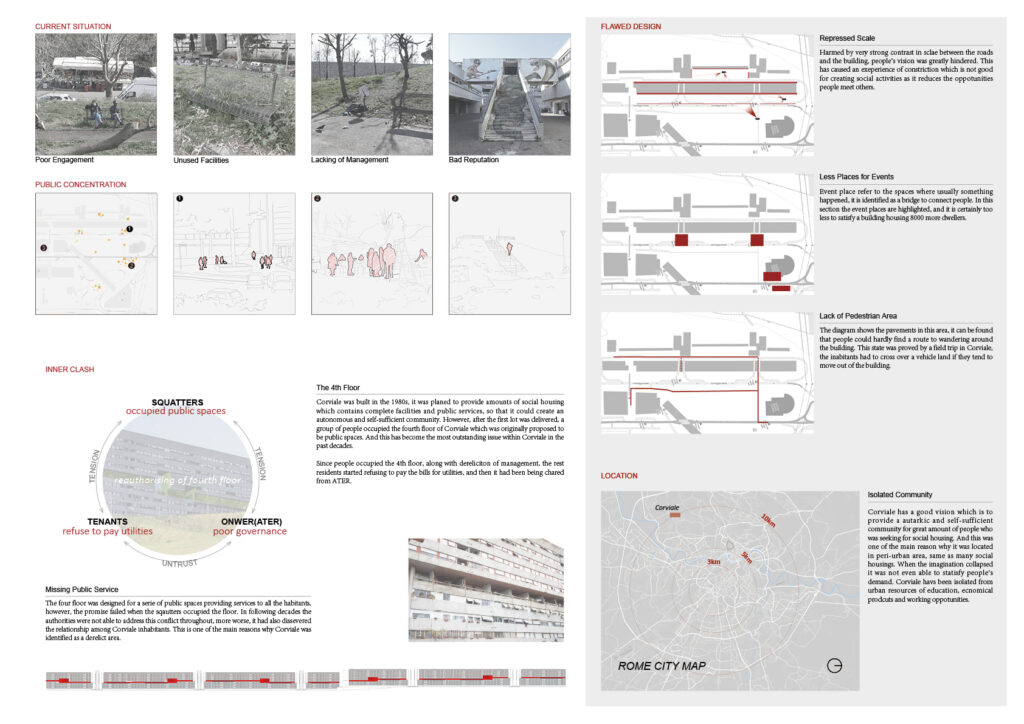
Feasibility Study of Implementing UA in Corviale
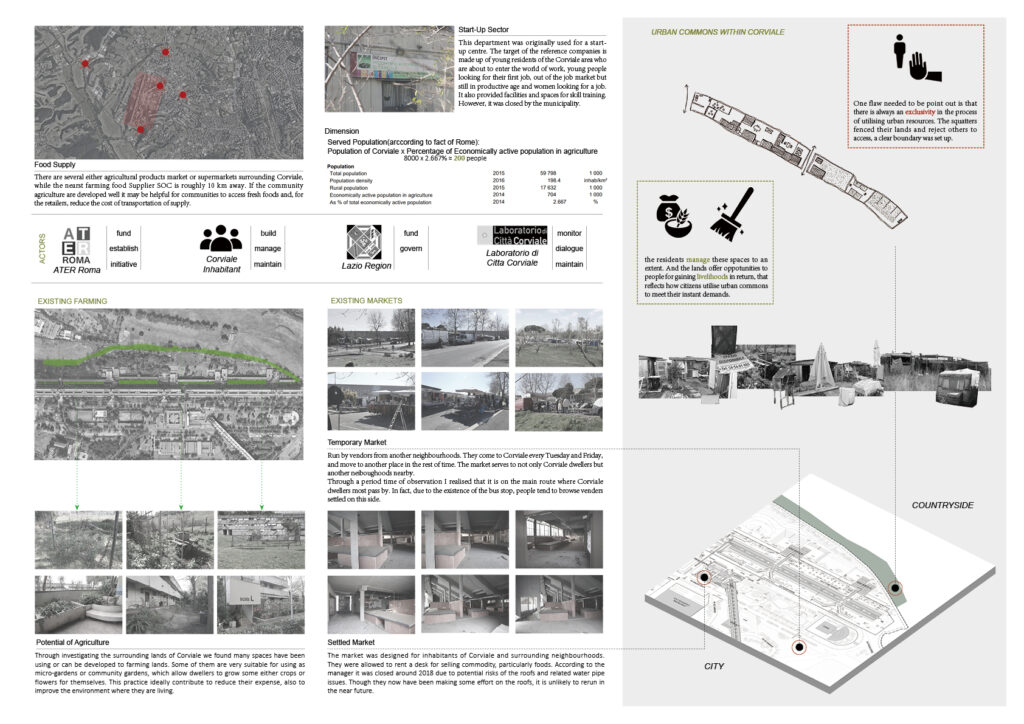
At the time processing field trip in Corviale, I noticed that the inhabitants had utilized urban commons as a tool for resolving issues they met. Specially, some of them had occupied the lands behind the main body of Corviale, at the edge of the countryside. They transformed the lands as private gardens or workplaces for livelihood and manage them. This interest and inspired me to use commons, with the form of agriculture, to resolve Corviale’s issues.
Overall Planning
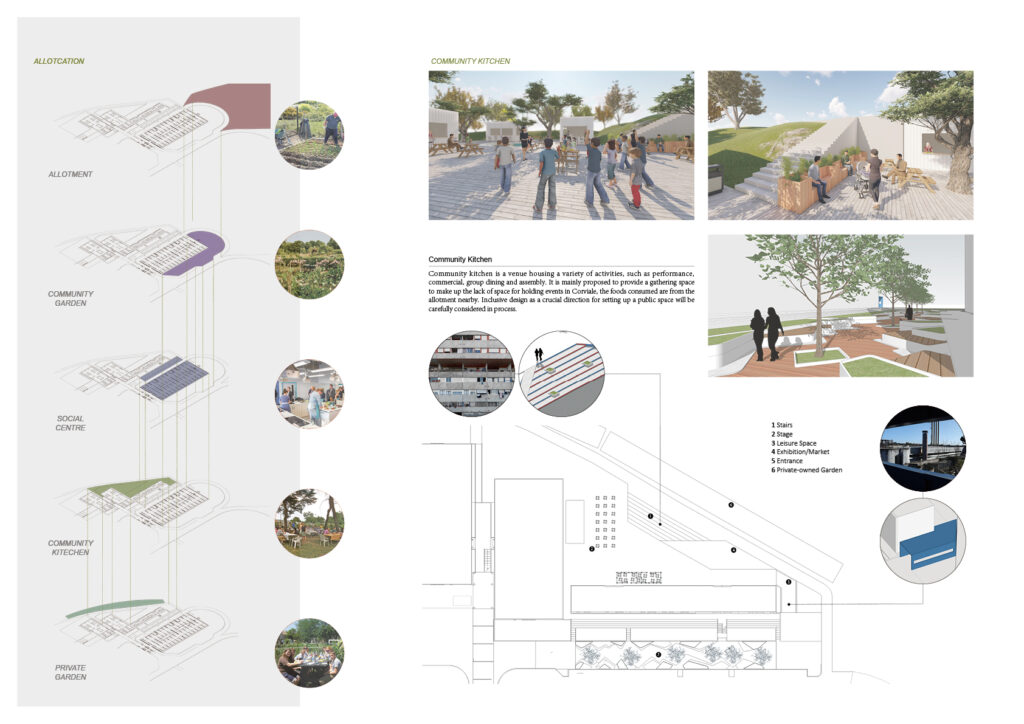
Allotment- Modular Shed
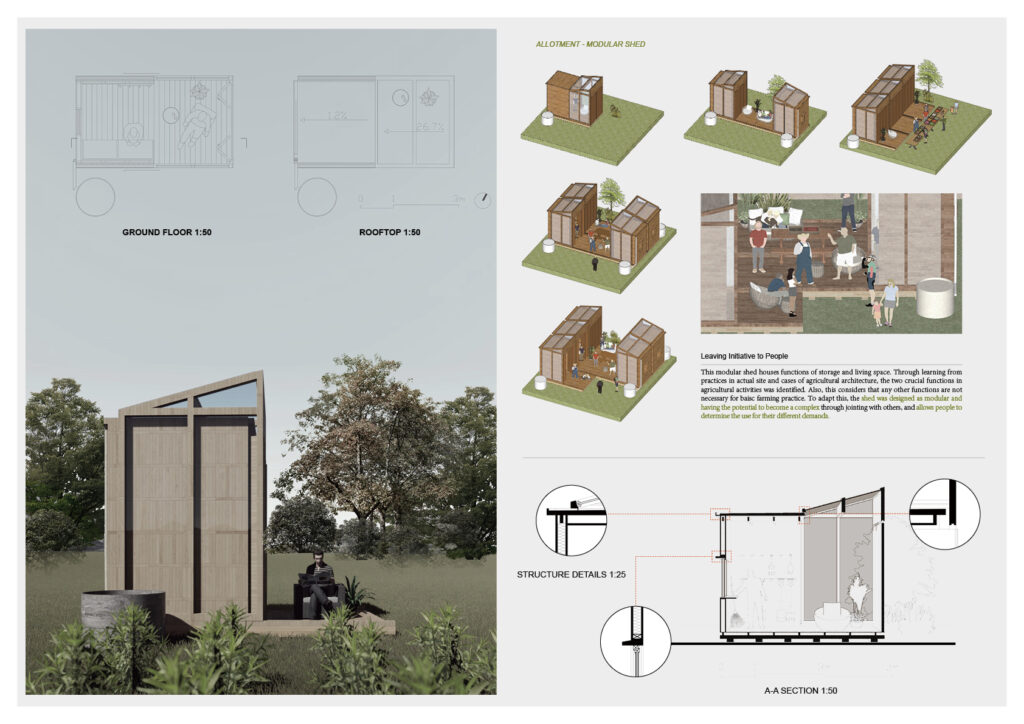
The proposal is about utilizing urban agriculture, with different types, as a platform for fostering commoning practices within Corviale’s inhabitants to address existing issues. Also, the project intends to create a sustainable system synthesizing patterns and functions of urban agriculture, to build a healthy and resilient community to deal with further challenges in development.
Personal Reflection
This has been an impressive year of my student life. I would like to emphatically talk about experiences and progress which curriculum provision brought to me. First, I strongly appreciate that the optional module offered ranges of choices from architectural technology to theory, which largely satisfied different interests and demands within students, I actually learned a lot about green architecture from Dr. Simon Lannon and Dr. Vicki Stevenson. Same as the optional modules, we had very nice tutor Dr. Giorgio Talocci and Dr. Federico Wulff who not only have been providing guidance and supports to our career but also the well-being of our life in ADR module.
